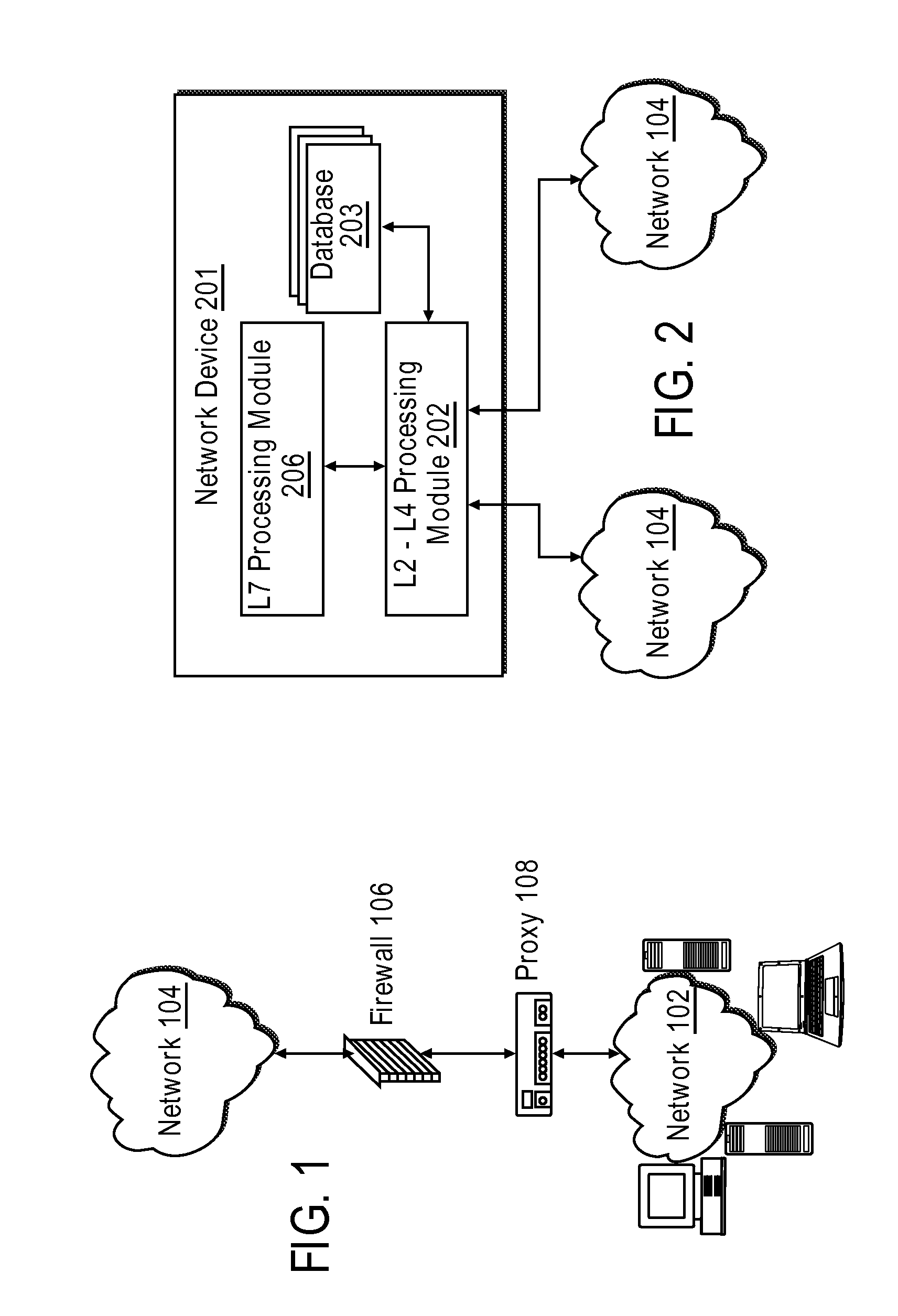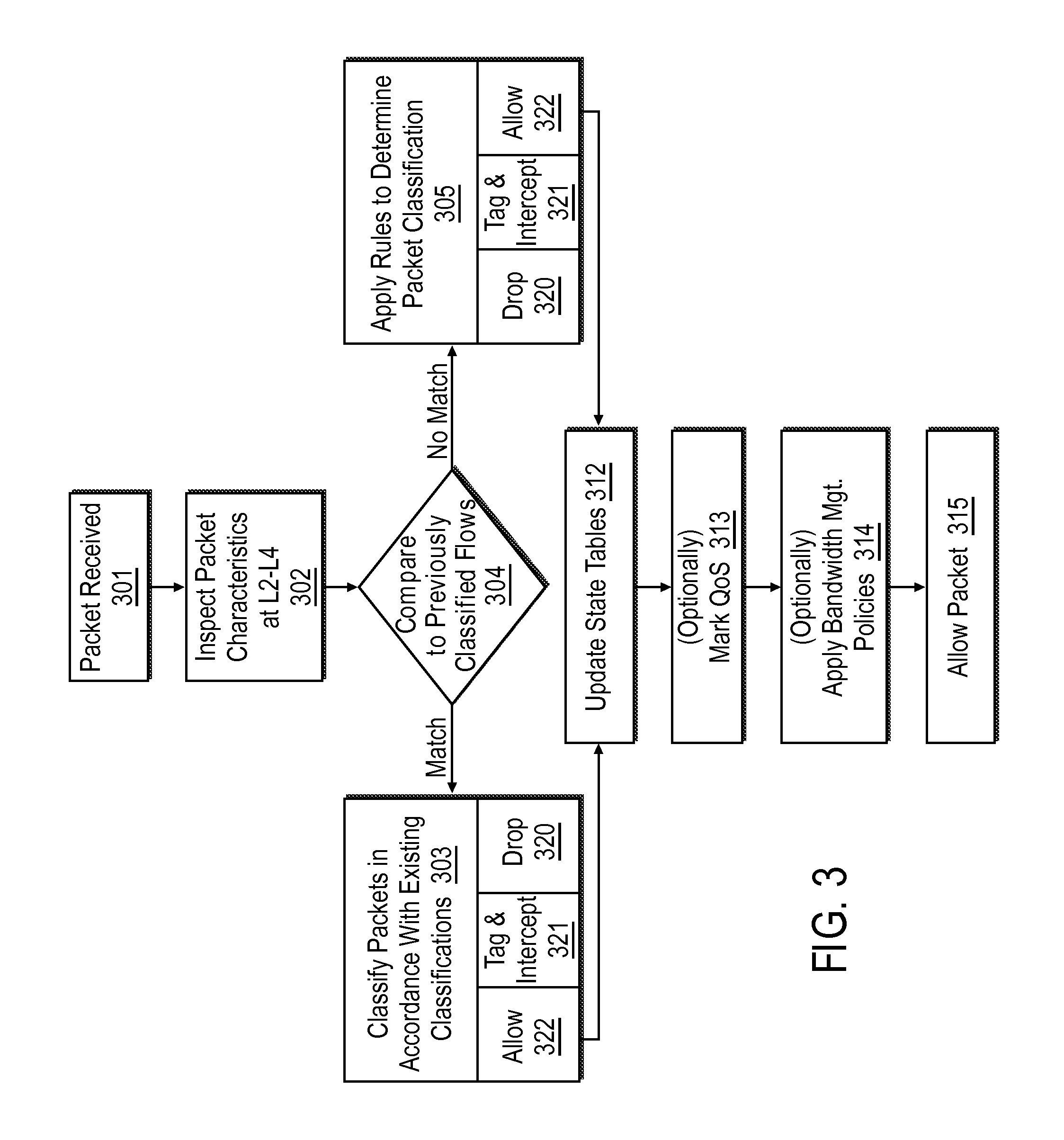System and method of traffic inspection and classification for purposes of implementing session nd content control
- Summary
- Abstract
- Description
- Claims
- Application Information
AI Technical Summary
Benefits of technology
Problems solved by technology
Method used
Image
Examples
Embodiment Construction
[0028] Methods and apparatus for regulating the flow of data packets within or between computer (e.g., packet-switched) networks are disclosed herein. At the outset, it should be noted that firewalls are not the only devices which may be used to secure computer networks. A proxy device (running either on dedicated hardware or as software on a general-purpose computer system) may act as a firewall by responding to input packets (connection requests, for example) in the manner of an application, whilst blocking other packets. In the description below, the example of a proxy will be used as a network device in which embodiments of the present invention may be implemented. Although the present system will be discussed with reference to such examples, these examples should not be read to limit the broader spirit and scope of the present invention. For example, various apparatus presented herein, such as firewalls and proxies, may be used in the implementation of the present methods, but ...
PUM
 Login to View More
Login to View More Abstract
Description
Claims
Application Information
 Login to View More
Login to View More - R&D
- Intellectual Property
- Life Sciences
- Materials
- Tech Scout
- Unparalleled Data Quality
- Higher Quality Content
- 60% Fewer Hallucinations
Browse by: Latest US Patents, China's latest patents, Technical Efficacy Thesaurus, Application Domain, Technology Topic, Popular Technical Reports.
© 2025 PatSnap. All rights reserved.Legal|Privacy policy|Modern Slavery Act Transparency Statement|Sitemap|About US| Contact US: help@patsnap.com



